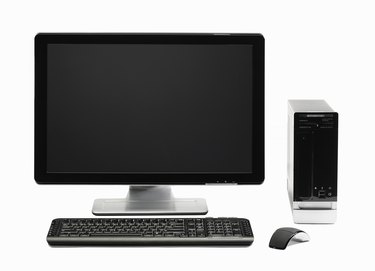
Device drivers are small computer programs that allow operating systems to read pieces of hardware connected to your computer. There are countless kinds of device drivers for dozens of different pieces of computer hardware. However, for a computer to have basic functionality there are a few select drivers that all computers must have.
BIOS
Video of the Day
BIOS (basic input/output system) is, by definition, the most basic computer driver in existence and is designed to be the first program that boots when a PC turns on. The BIOS is stored on memory built into the motherboard and is designed to boot the hardware connected to the PC, including the hard drives, video display output (whether it be video card or on-board), keyboard and mouse.
Video of the Day
Motherboard Drivers
Motherboard drivers are small programs that are read by either Windows or Linux and allow for basic computer functions while inside the operating system. These drivers normally include programs that allow broadband ports, USB ports and I/O ports for the mouse and keyboard. Depending on the make of the motherboard, the drivers may also have basic drivers for video and audio support.
BIOS are not the same as motherboard drivers.
Hardware Drivers
Hardware drivers are programs that are designed to allow pieces of computer hardware, such as expansion slots, to function on a computer. Video cards, sound cards, network cards and other expansion cards come with driver discs to ease the installation process of the hardware. Other devices, like certain kinds of digital cameras and MP3 players, have PC drivers programmed into their software for easy use on most makes of personal computers.
Virtual Device Drivers
Virtual device drivers are different than most drivers. Unlike the majority of drivers, which allow pieces of hardware to work with a particular operating system, virtual device drivers emulate a piece of hardware and essentially trick the computer into thinking that it is reading from a piece of actual hardware. A particularly popular use for virtual device drivers is with reading .iso files without having an actual disc, using one of these drivers to emulate a CD or DVD drive.